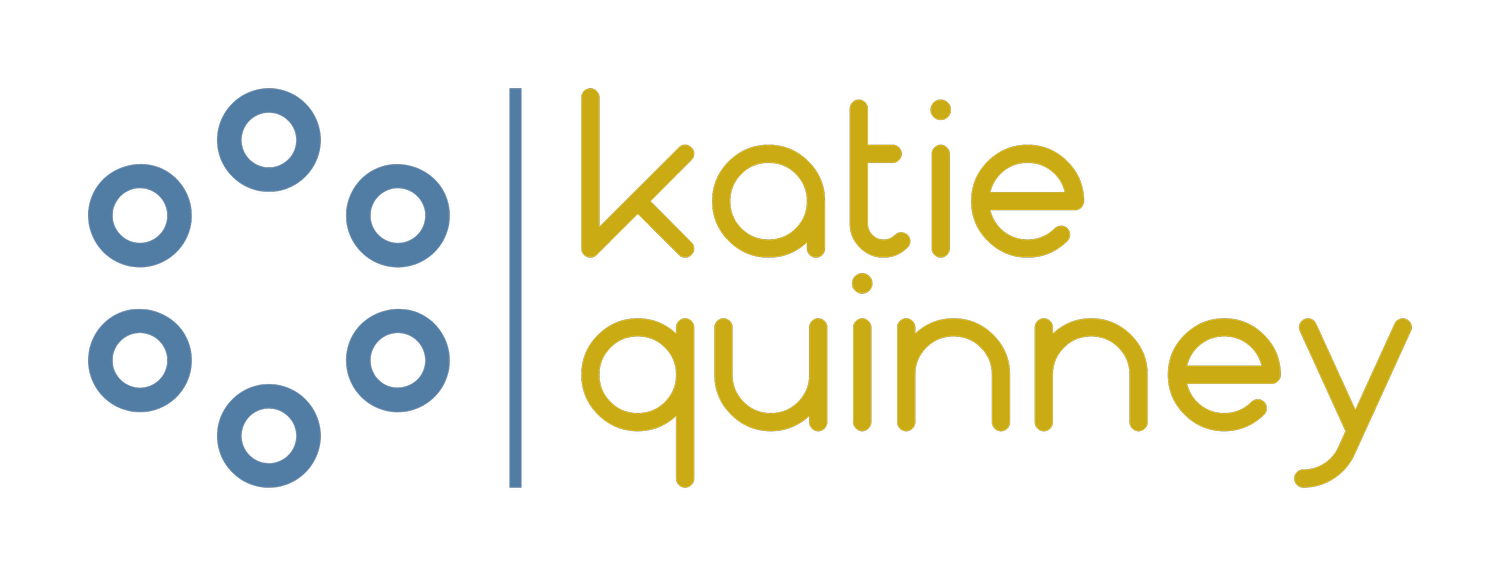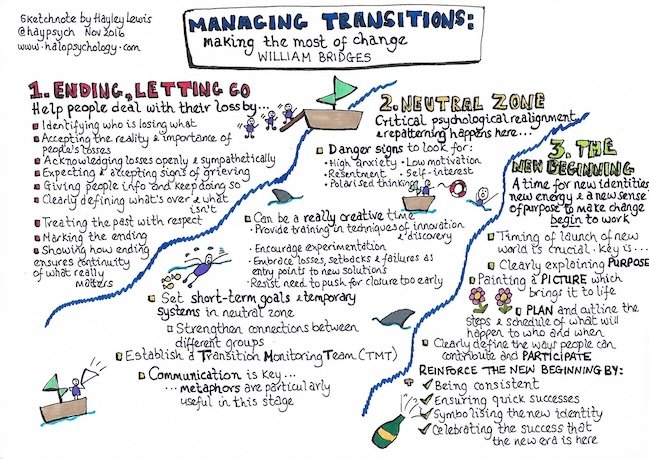A 3-step model for times of transition
We can get excited by change, the thought of the new, what we can achieve and create. The possibilities and opportunities for refreshing and improving things. When you lead in that space that energy and commitment are important. It’s also important to consider others might not be in the same place as you. Your enthusiasm may not land quite right if the team aren’t given the space to transition.
Over the years I’ve spent in healthcare I’ve seen the impact and long-term effect if teams aren’t given this space and acknowledgement. This model which has been around and in use for over 30 years captures the phases and gives guidance to work with a team going through a change.
The Bridges Transition model helps leaders walk through the personal and human side of change. It has three stages: Ending; Neutral zone; and New Beginnings. It recognises that humans need to be supported and transitioned through change for any change to be successful.
So to start with - what's the difference between change and transition?
Change is the actual thing that is shifting or new. A new strategy, a change in leadership, a merger, a move to a new area.
"Transition is the inner psychological process that people go through as they internalize and come to terms with the new situation that the change brings about."
Stage 1: Endings
This phase is about the loss of the old way of doing or being. Letting things go, things that may have served people is never easy and results in a sense of loss. There is a downward trajectory of morale and engagement. The emotions involved may include fear, uncertainty, anger, denial, frustration......The end of something has to be accepted before you can build the new and if the emotions are not acknowledged and heard then you'll likely encounter resistance throughout the change process.
What then can you do to help people through stage 1: This involves tapping into those super essential skills for leadership - listening and empathy. The space for people to be able to talk about how they are feeling without fear of being judged is hugely important, for that you'll need to create physiological safety for your team. Fear can often come from what is not known, so communicate about what is happening, more than you think is needed. Because of the fear people are feeling they may not hear you the first couple of times. Letting people know where they fit in the change and what is proposed, including where their strengths, skills and experience will be needed is a good approach to build into your communication.
Stage 2: The Neutral Zone
This marks those moments where you are stopping one thing and starting the new stuff, the shifting sands feeling almost. There is often a feeling of being lost, unsure, waiting for something but not really knowing what that is or looks like. Productivity and morale can be low coupled with skepticism of the future and what's being proposed, maybe even resentment. This is though where people start to learn new things and begin to look forward.
Guiding people through phase 2 then: Let the team know it's OK to feel lost or unsure, and be open about the uncertainties. Guidance and getting alongside are the big things here. Feeling unproductive can be as uncomfortable as the uncertainty, stay close and visible, set short-term goals, give feedback, and talk about quick wins. Do what you can to boost morale, being clear about work priorities and re-setting timelines for other work might all be of use.
Stage 3: New Beginnings
This stage is where people develop their new understandings, relationships and beliefs. That new future is now possible to be seen. Their identity and place in the change and the new way of working is understood. The skills needed are being used, and results from those quick wins are coming in. This is where teams can feel energised and invigorated with morale and engagement increasing.
Your role as the team moves to stage 3: This is where you need to think about sustainability. Link goals to longer-term objectives, stretch the vision out for the team as to where they are going but keep it within their sights and connected with what their personal goals are. Celebrate the process and the progress.
Top tips
Not everyone in your team will move through at the same time, so don't try and push/pull people to stage 3. There can also be dips back and forth between the stages, so remain aware of the emotions being displayed and keep the communication open and safe. Be patient (I think the hardest bit as there is usually some drive or timeline - remember though if you rush this you'll be picking up the pieces for a while to come). The Bridges Transition model sits alongside other models for change, integrating and connecting with how it suits the situation and the team you are in.
References, Information sources and further reading
Mind Tools: The four stages of coping with change: a video
The Three Questions: What is changing, what will actually be different, who is going to lose what?
Mind Tools: The Bridges Transition Model

